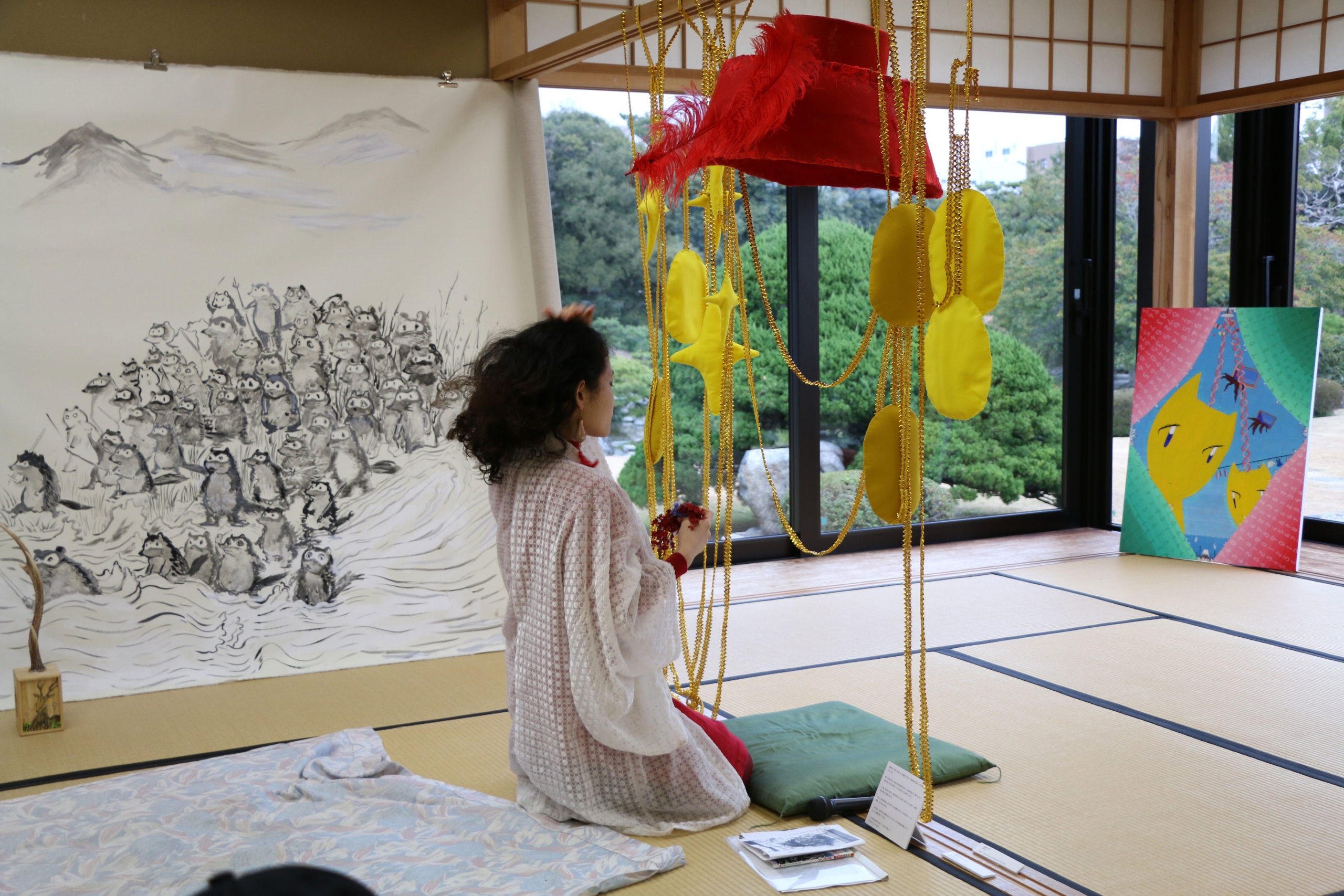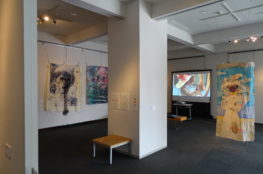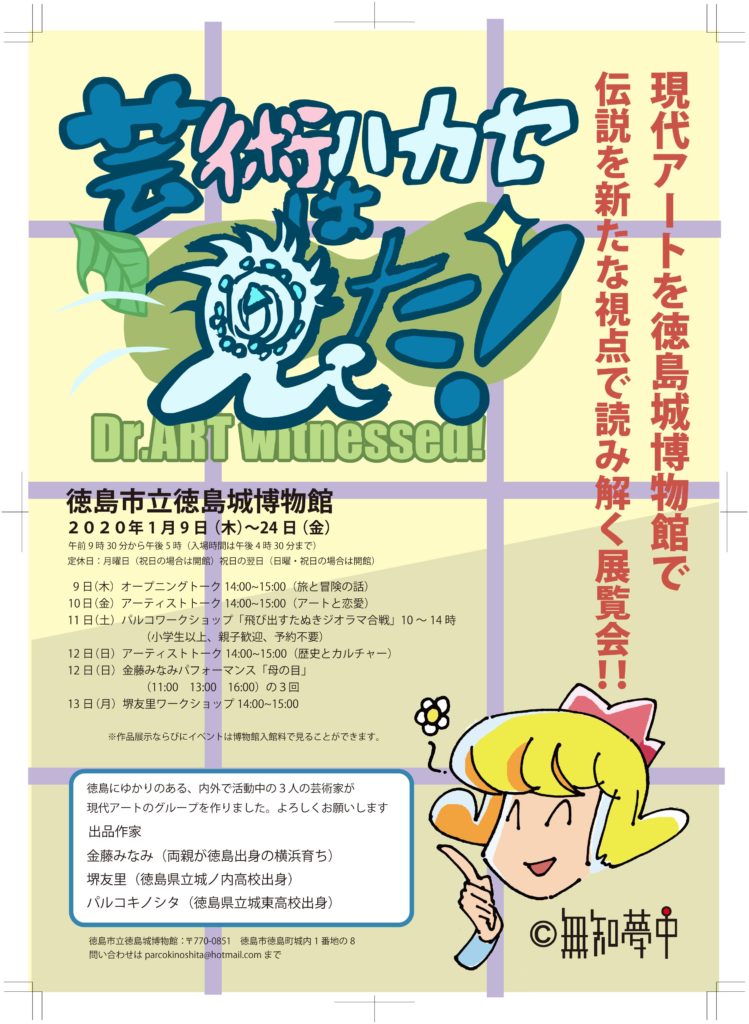

公式サイト Website: https://www.city.tokushima.tokushima.jp/johaku/event_calendar/index.html
Review: 「物語を紡ぎ、文化の変容に立ち会う──四国の二つの展覧会より 橘美貴(高松市美術館)」
「Weaving Stories and Attending Cultural Transformation: From Two Exhibitions in Shikoku 」 by TACHIBANA Miki (Takamatsu City Museum of Art)
https://artscape.jp/report/curator/10160457_1634.html?fbclid=IwAR151rXDOOhGRVi96I2LvYzMDc0A4i59dlB7LQHAyANBLdWrlBjSPkp8xEc
徳島市立徳島城博物館 ( TOKUSHIMA CITY TOKUSHIMA CASTLE MUSEUM )( 徳島市徳島町城内1番地の8 )(1-8 Tokushimajyocyojonai, Tokushima-city, Tokushima Prefecture, Japan)
「芸術ハカセは見た!~徳島のひみつ展~」Dr. ART witnessed! The exhibition of the secret of Tokushima
Period: 2020年1月9日〜24日 (9th to 24th January)
| 開館時間 Opening hour | 午前9時30分から午後5時(入場時間は午後4時30分まで) |
|---|---|
| 休館日 Closed | January 14(Tuesday),20(Monday) |
Archive
「芸術ハカセは見た!動画配信記録」記録・配信協力: みそにこみおでん https://note.com/misonikomi_oden/n/n7632fd10af98
2020年1月12日16:00~
芸術ハカセは見た!金藤みなみパフォーマンス「母の目」#芸術ハカセは見た 記録・配信協力:みそにこみおでん 協力:堺(妹)
https://www.pscp.tv/misonikomioden/1yoKMzwMmMlGQ
Documents
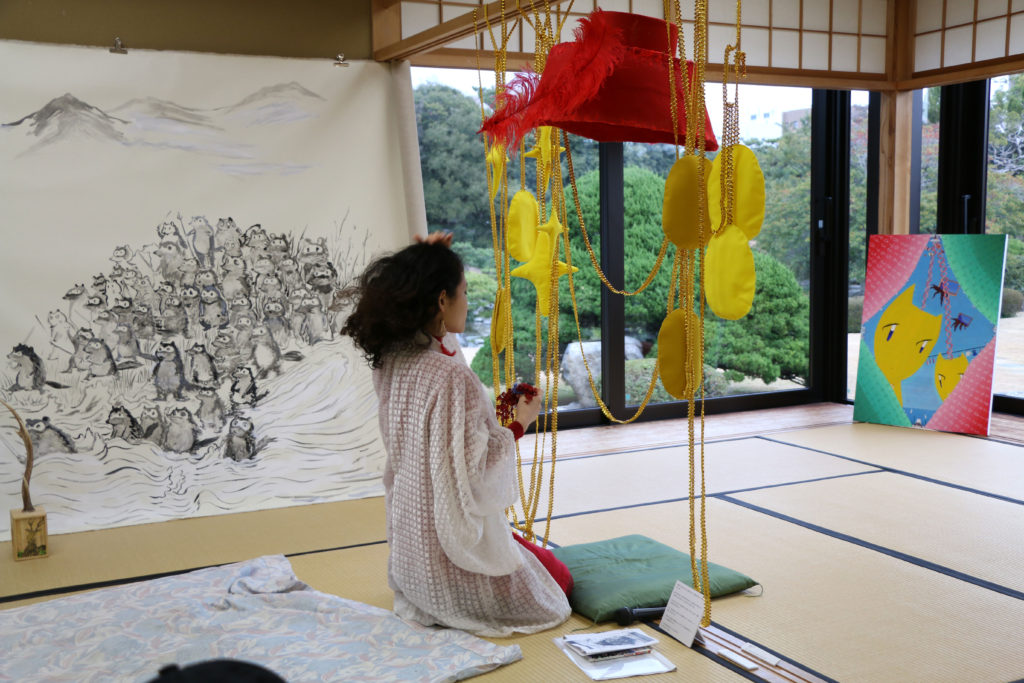
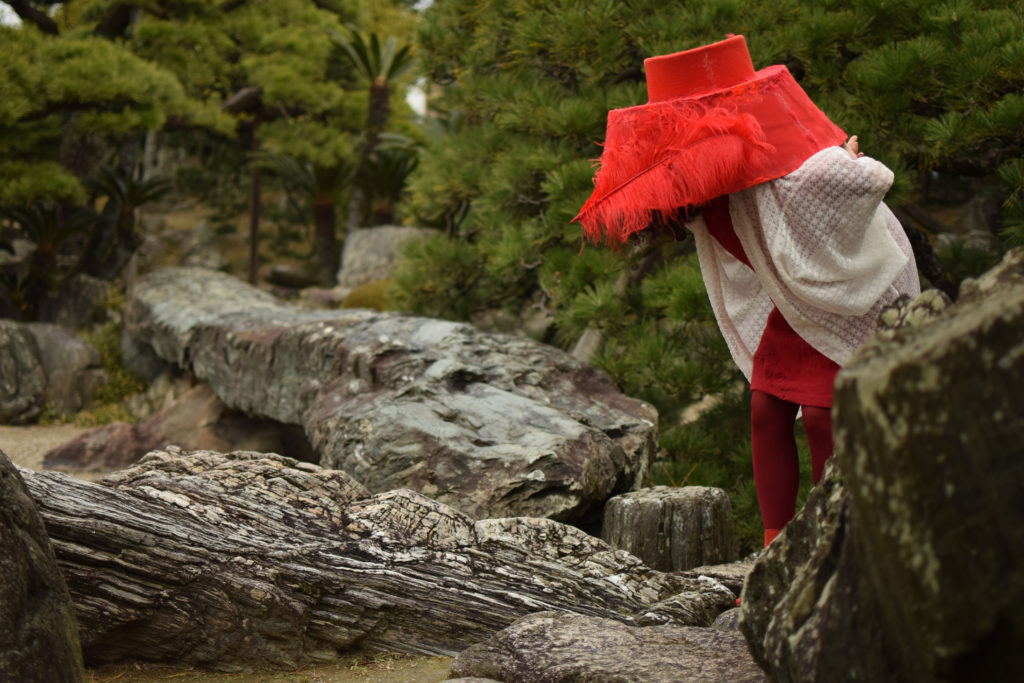
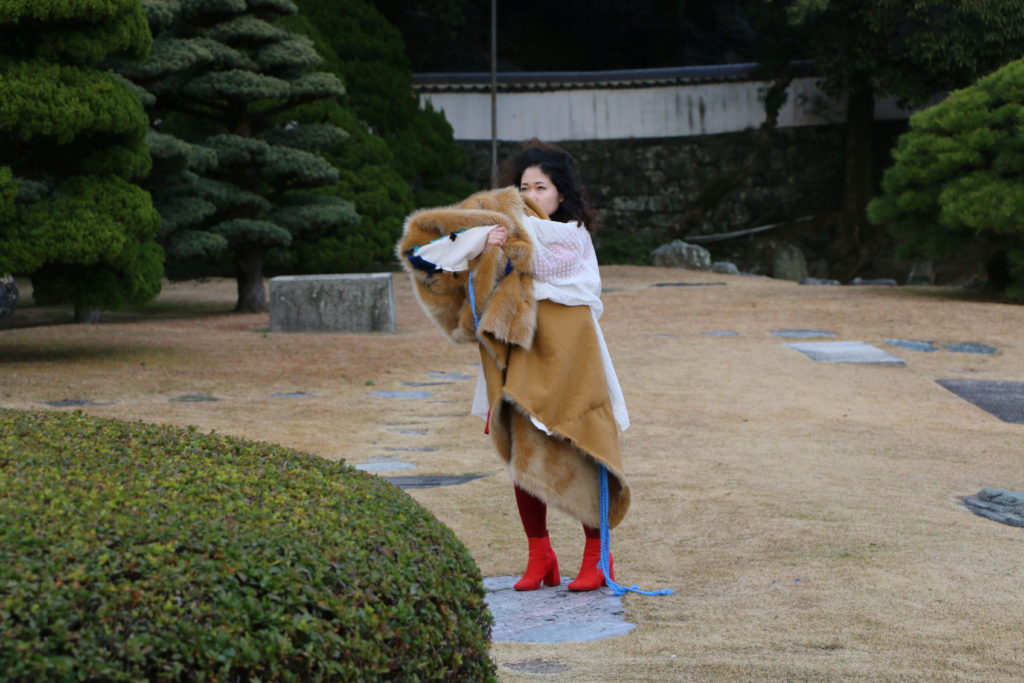
鉢かづき姫について
本作は民話『鉢かづき姫』を語り直した作品だ。
「母娘相続」の過程を女性の自立として読み解く方法として、主に刺繍と被り物を用いたインスタレーションとパフォーマンスを行った。
刺繍や被り物では、物語を読み解くために作品を注意深く読み解き、作品の一部として参加し、追いかけていくこととなる。
刺繍とパフォーマンスでは、グリム版『シンデレラ』を参照し、相似する部分を際立させ、「娘が一人立ちするきっかけである水辺」を指摘する。
当日、performanceの前に5分ほどの語りが挟まれた。鉢かづき姫のあらすじや、時代による表現方法や強調点の違い、そしてパフォーマンスの動きを語りで説明した。語りの中では坪内逍遥版の戯曲や、折口信夫の解釈を紹介した。また、江戸時代に描かれた鉢かづき姫の絵が俯瞰であることから、「母の目線(鳥瞰図)」なのではないかいう解釈の刺繍作品や、折口信夫の対談をヒントに河童のモチーフで姫を捉えた刺繍作品が展示されていた。
パフォーマンスの流れは以下である。
母の目が描かれた刺繍を引きずり、上から眺める→庭へと鉢をかづいて歩いていく(その際目が追いかけてくる)→庭の水場で自己の姿を認める→鉢を脱ぎ、先ほどとは打って変わった足取りで軽快に走る。
本パフォーマンスを含む展評「物語を紡ぎ、文化の変容に立ち会う──四国の二つの展覧会より」で橘美貴(高松市美術館)が指摘するように、現代では語りなおす方法は多岐にわたる。物語という没入感を伴うものを体験するために、物語の生成過程を提示し、点在させることで、客観性をも求められる。主観と客観の両立こそが、物語をドライブさせるために必要なものなのではないだろうか。
本作のモチーフとなる民話との出会いは8年前にさかのぼる。まだ当民話を知らなかった時、「赤い痛みを三角だと感じる」という完成から、『ACHELA』という作品を制作した。 その作品を発表した際、鑑賞者に「鉢かづき姫に似ているね」と相似性を指摘されたことが、本作のインスピレーション元である民話『鉢かづき姫』との出会いのきっかけだった。
昔から伝わる民話が、様々な媒体を経て後世に伝えられる際、様々な解釈があっただろう。その様々な形を点在させて再度構築することで、 「母娘相続」「 娘が一人立ちするきっかけである水辺 」などの新たな解釈を提示するパフォーマンスとなった。
About Princess Hachi-Kazuki.
This work is a retelling of the folk tale ” Hachi-Kaduki Hime “.
As a way of interpreting the process of “mother-daughter inheritance” as women’s self-reliance, I created an installation and performance using mainly embroidery and clothing.
In embroidery and sheathing, the work is carefully read to decipher the narrative, participating and following it as part of the work.
In her embroidery and performance, she references the Grimm version of Cinderella, highlighting the similarities and pointing out “the water’s edge as the impetus for her daughter to stand on her own.
On the day of the performance, a five-minute narrative was interrupted before the performance. The narrative explained the plot of Princess Hachikaduki, the different ways of expression and emphasis in different periods, and the movement of the performance. In the narration, he introduced the play by TSUBOUCHI Shoyo and Origuchi Nobuo’s interpretation. Also on display were some embroidery works that were interpreted as a “bird’s eye view of a mother” because the picture of Princess Hazakaduki painted in the Edo period is a bird’s eye view, and some embroidery works that were inspired by a conversation with Nobuo Origuchi and captured the princess with a motif of a kappa.
The performance flow is as follows.
I dragged the embroidery of my mother’s eyes, looked at it from above, walked over the bowl to the garden (my eyes followed me as I did so), acknowledged my self at the garden watering hole, took off the bowl, and ran lightly with a different gait than before.
As Tachibana Miki (Takamatsu City Museum of Art) points out in her review of the exhibition that includes this performance, “Weaving Stories and Meeting the Transformation of Culture: From Two Exhibitions in Shikoku,” there are many ways to re-tell stories today. In order to experience the immersive nature of narrative, objectivity is also required by presenting and interspersing the process of story generation. Both subjectivity and objectivity is what drives the story, isn’t it?
The encounter with the folklore that is the motif of this film goes back eight years. When I didn’t know this folktale yet, I created the work “ACHELA” from the completion of “feeling the red pain as a triangle”. The inspiration for the film came from the folk tale “Princess Hachi-Kaduki” when an audience member pointed out the resemblance, saying, “You look like Princess Hachi-Kaduki.
There must have been many different interpretations of the folk tales that have been handed down from time to time through various media. The performance presented new interpretations of “mother-daughter inheritance” and “waterfront as an opportunity for daughters to stand on their own” by interspersing and reconstructing these various forms.
